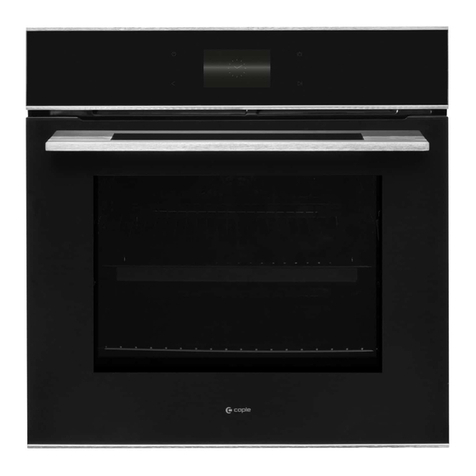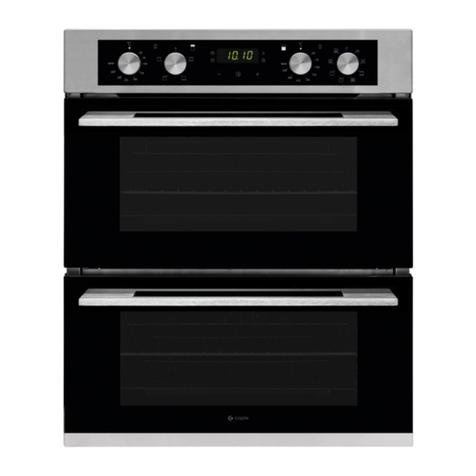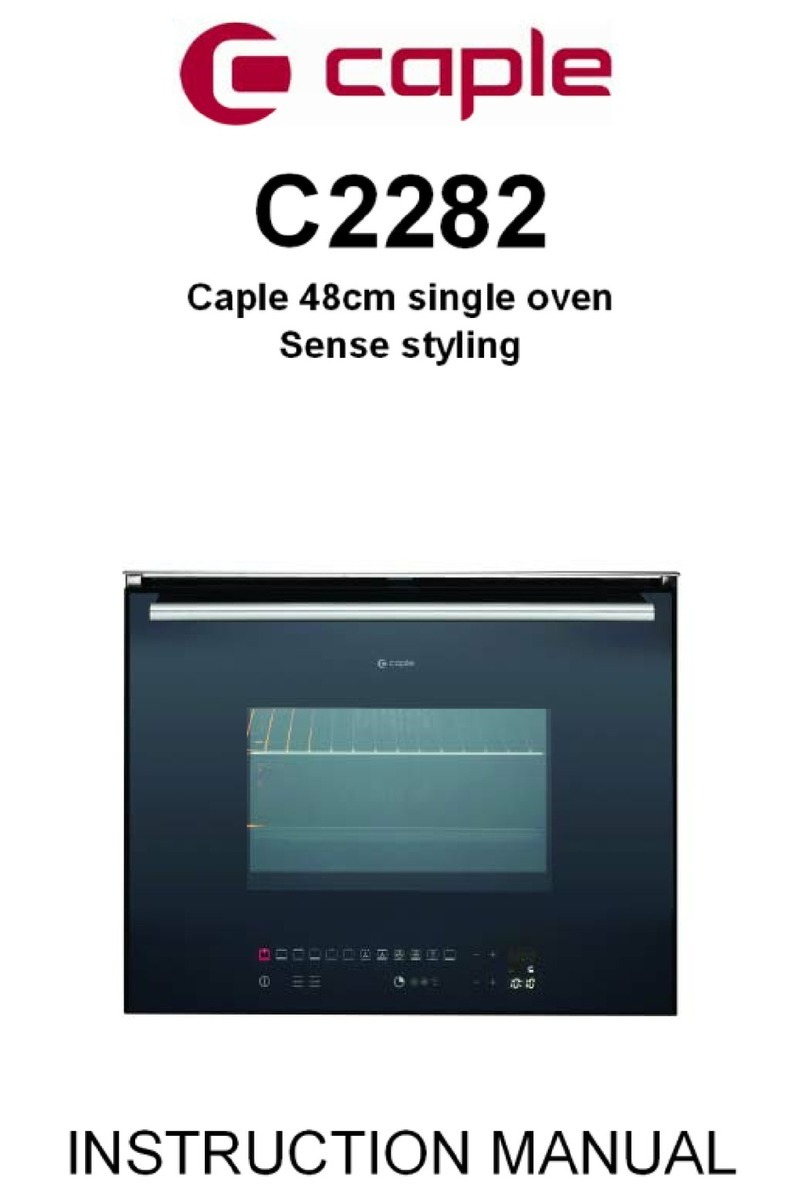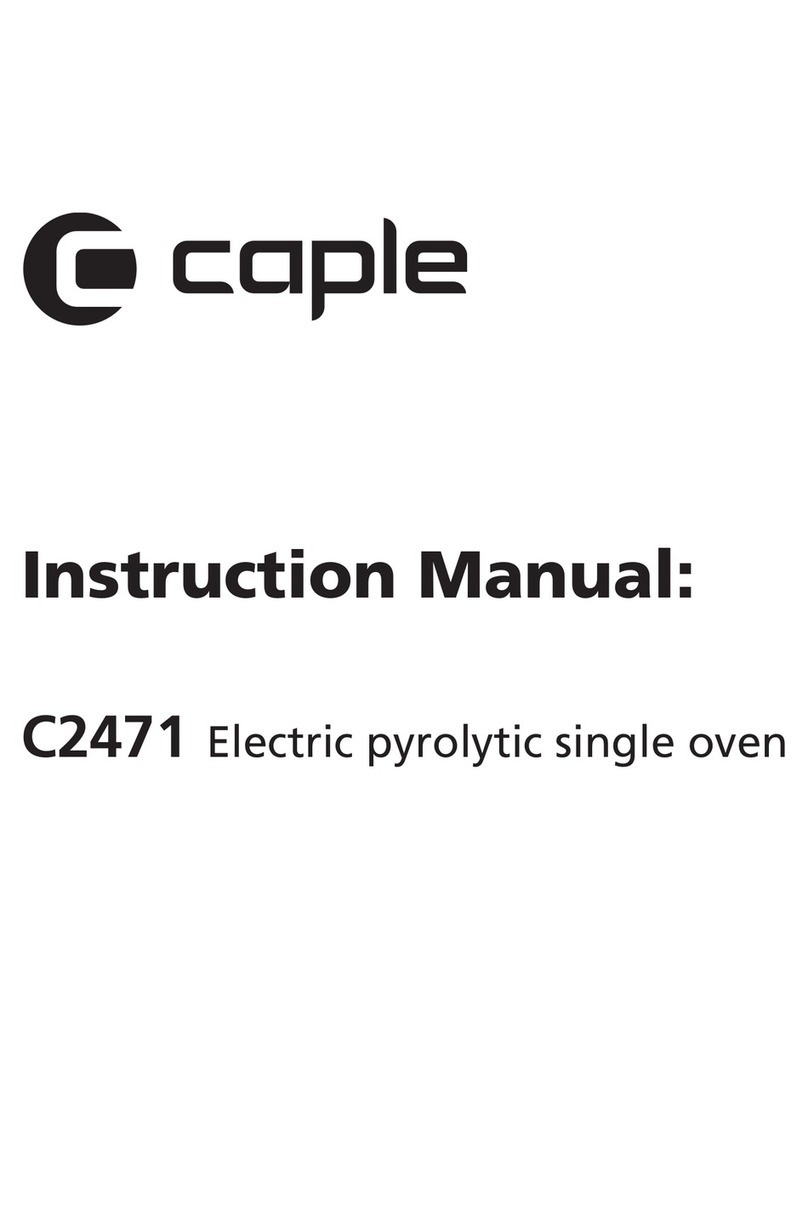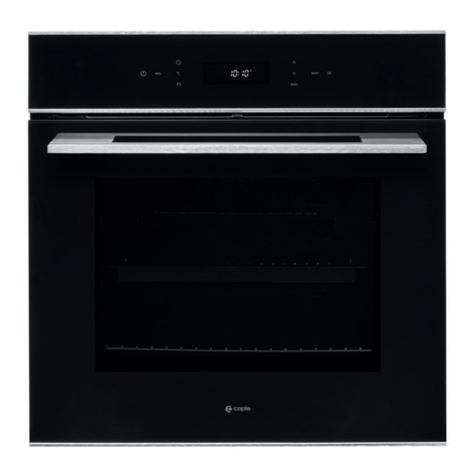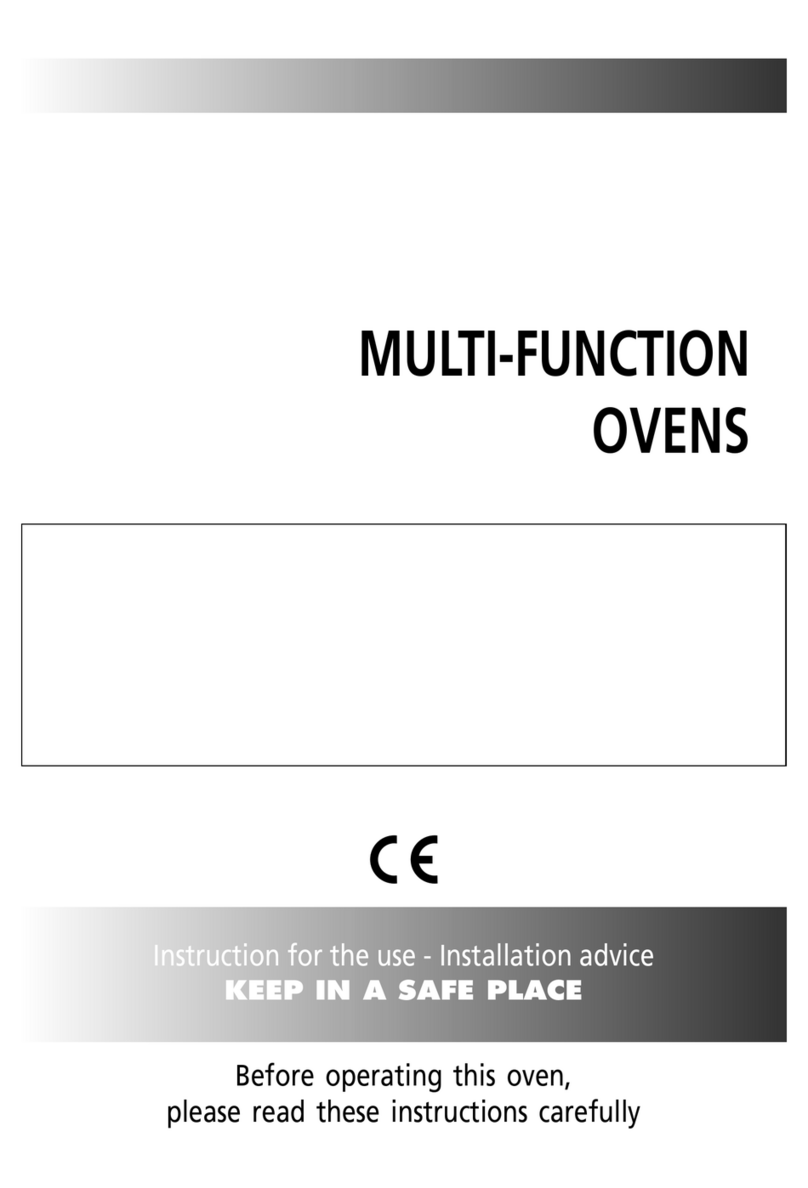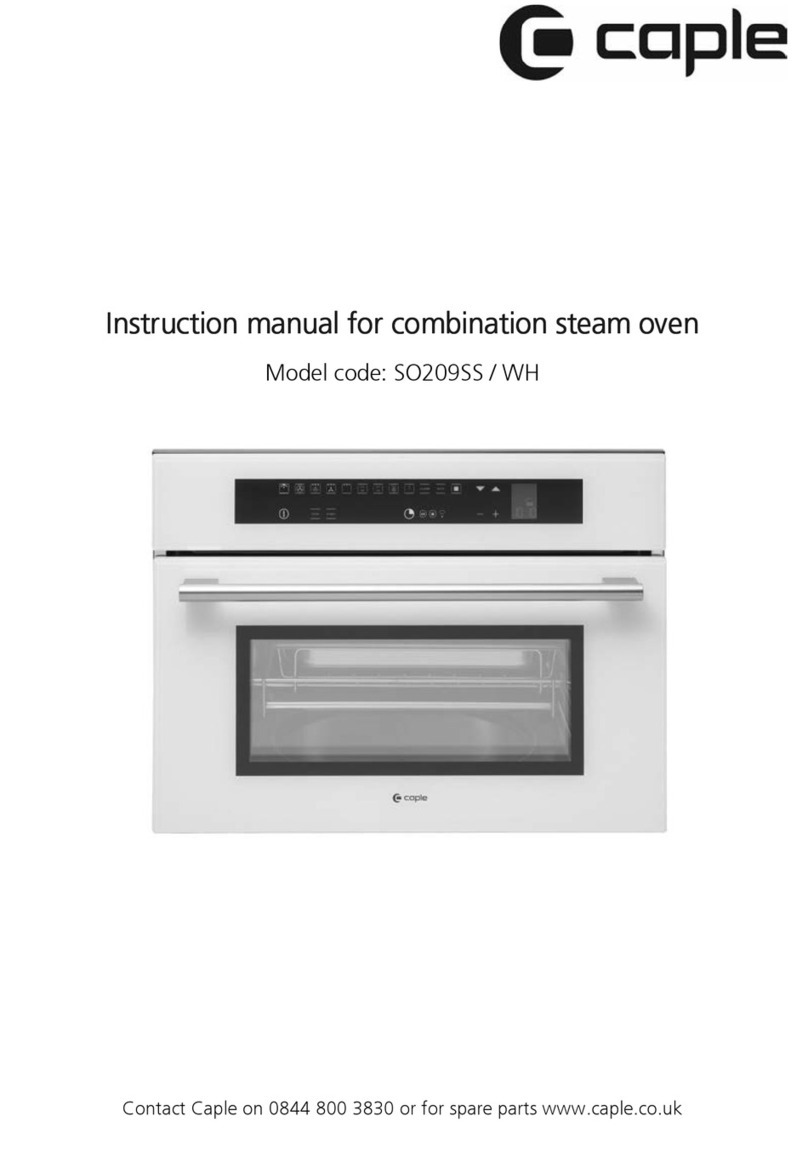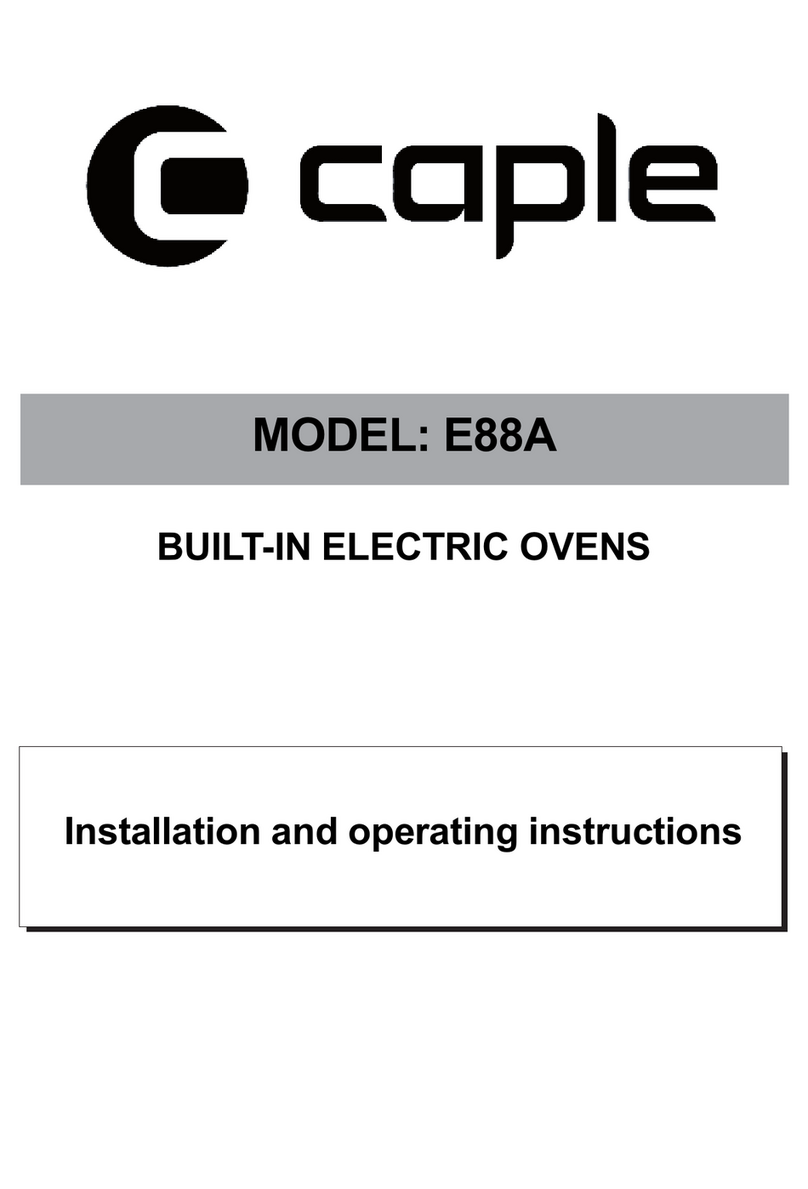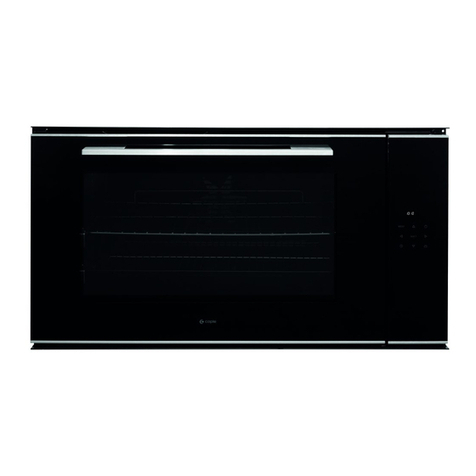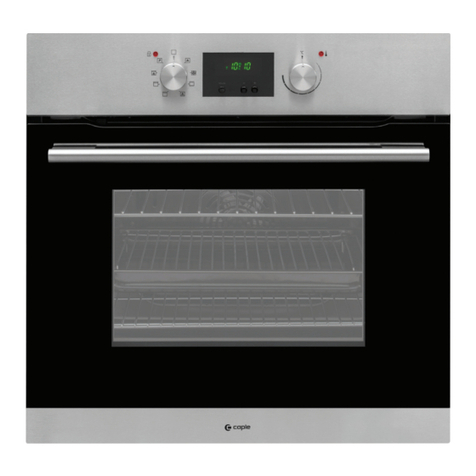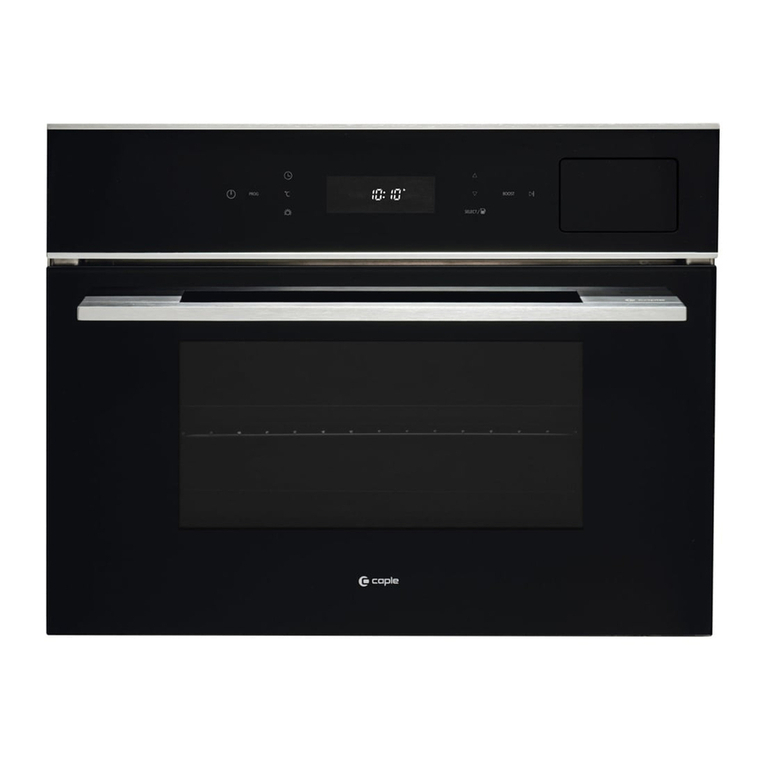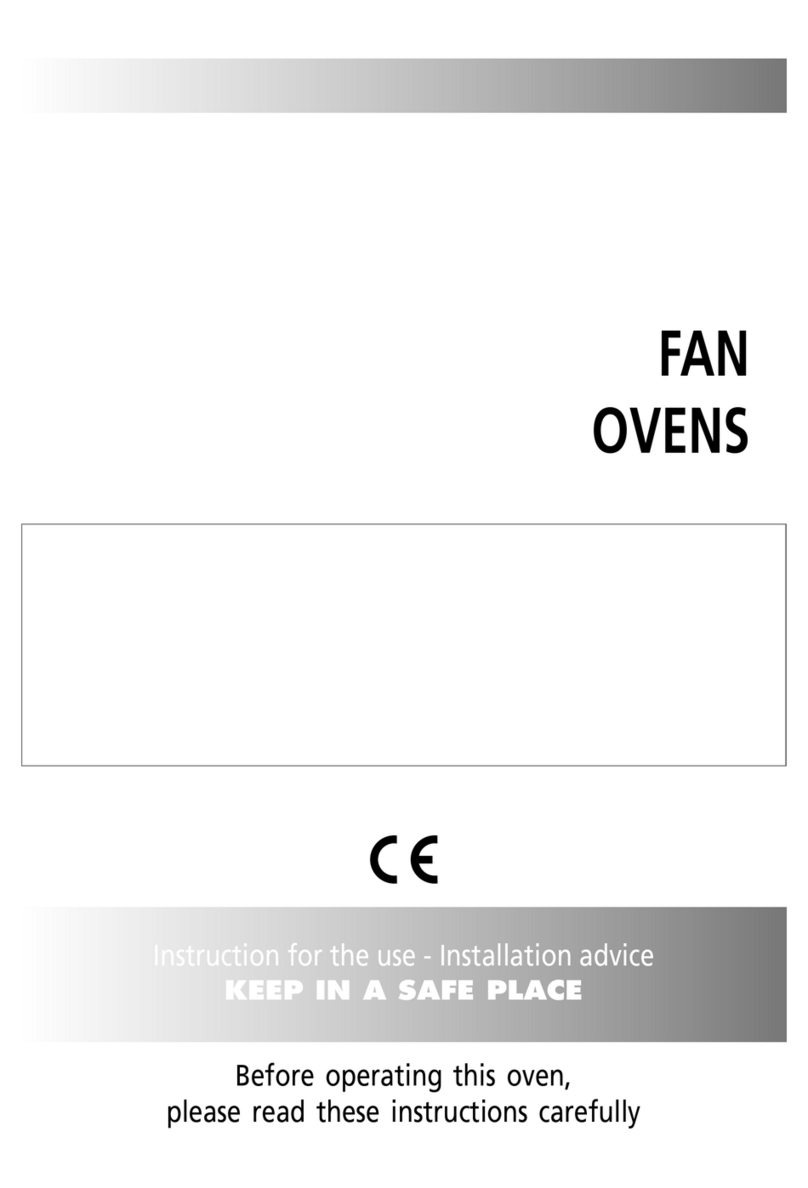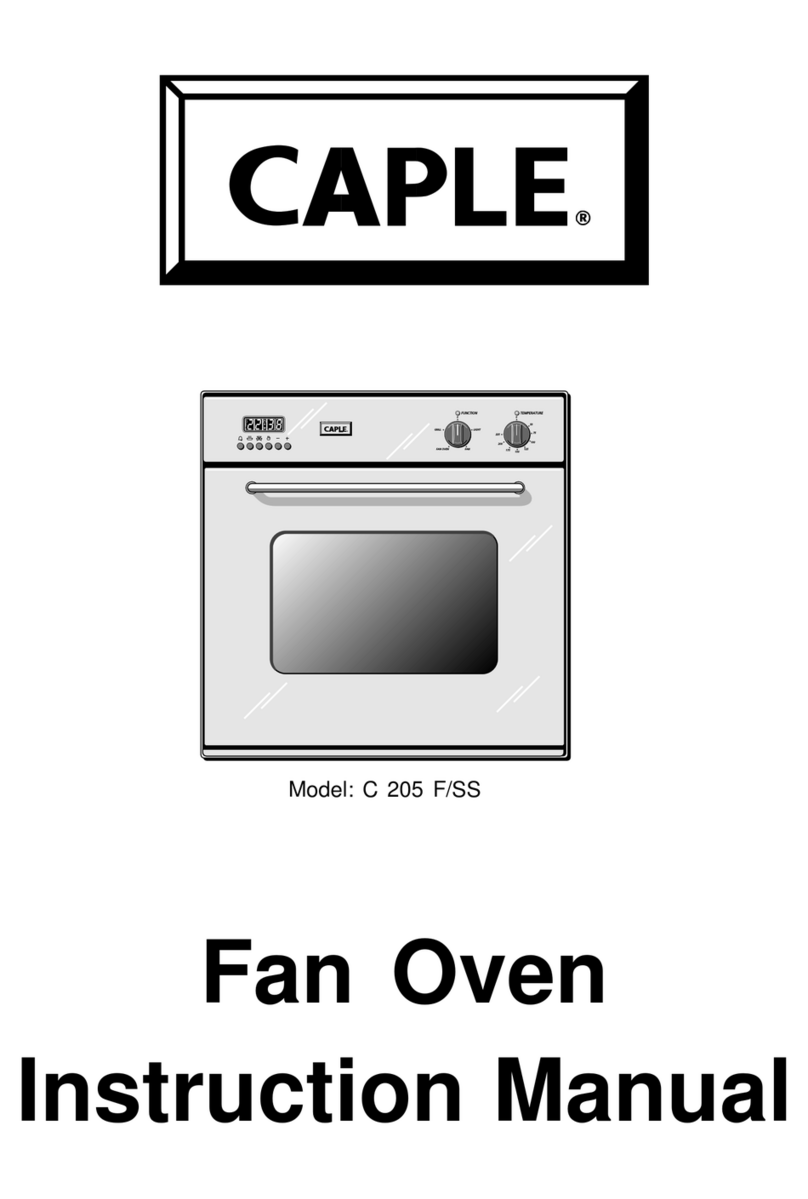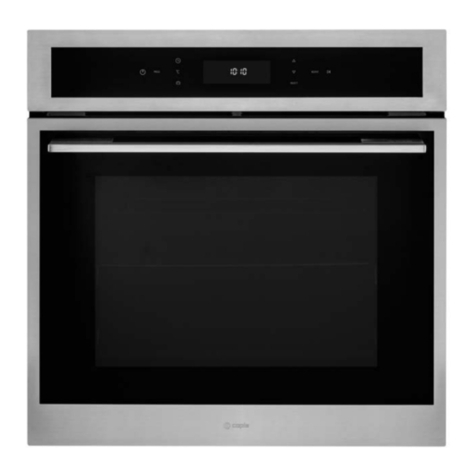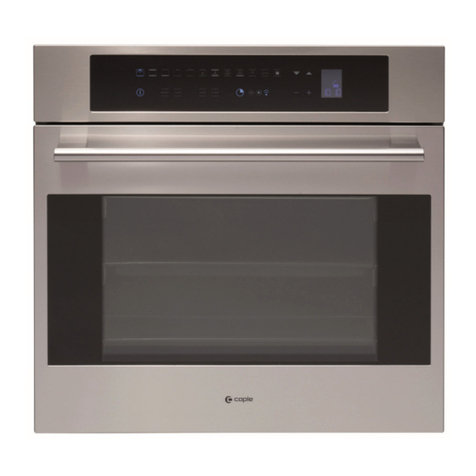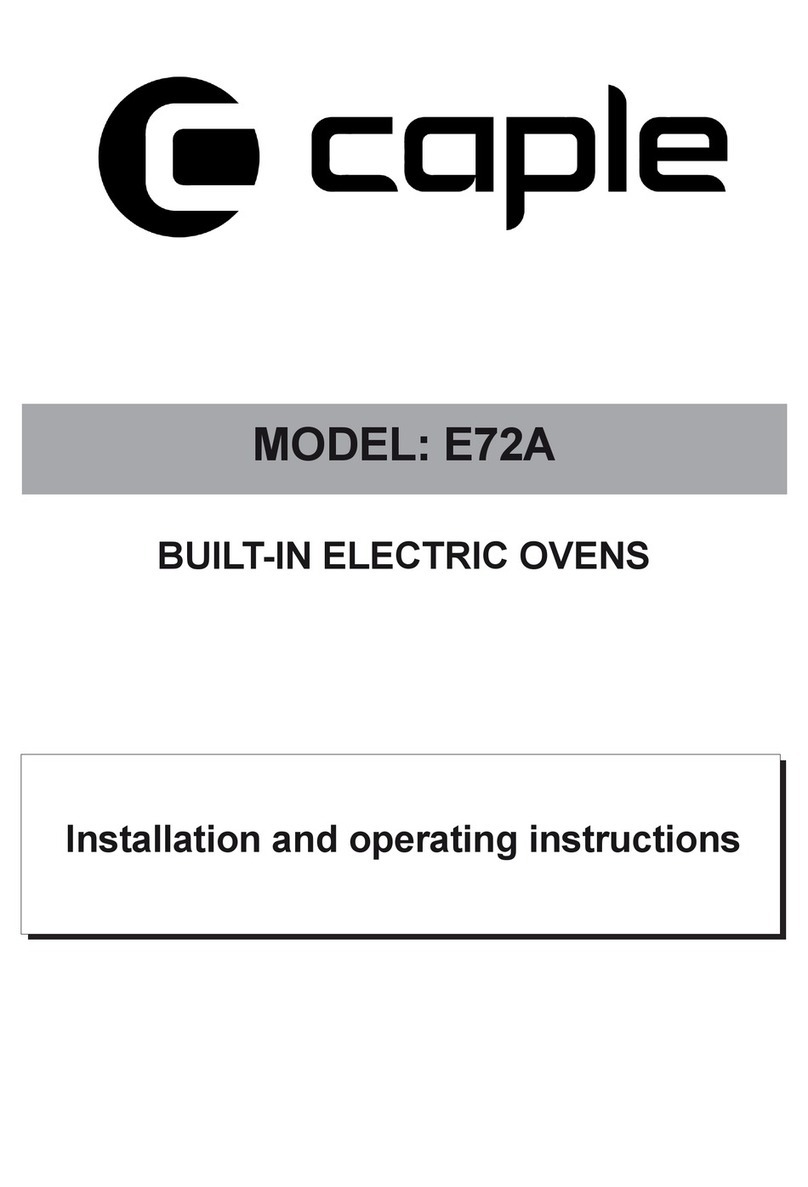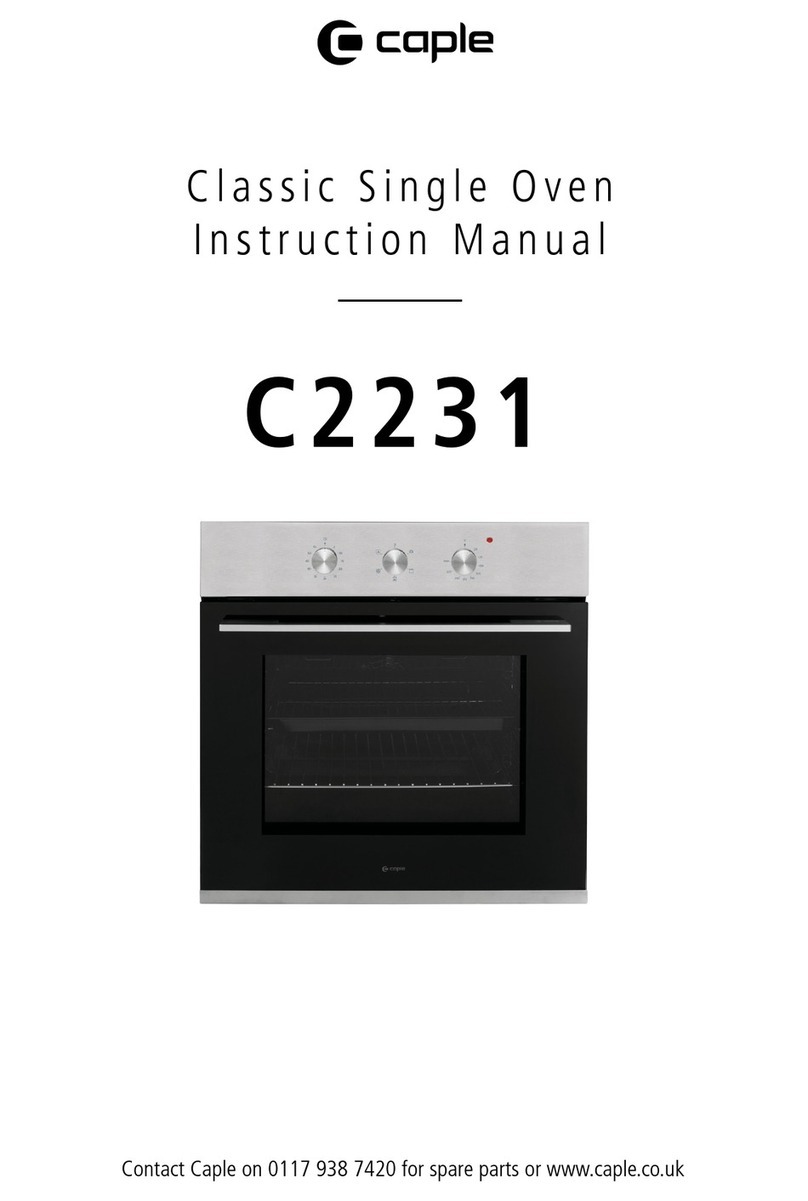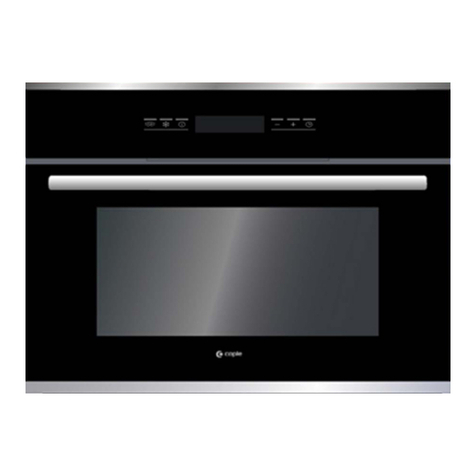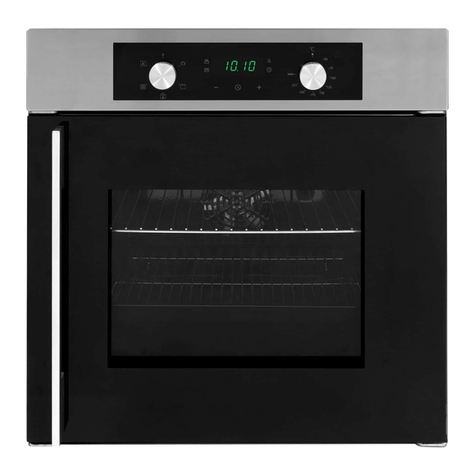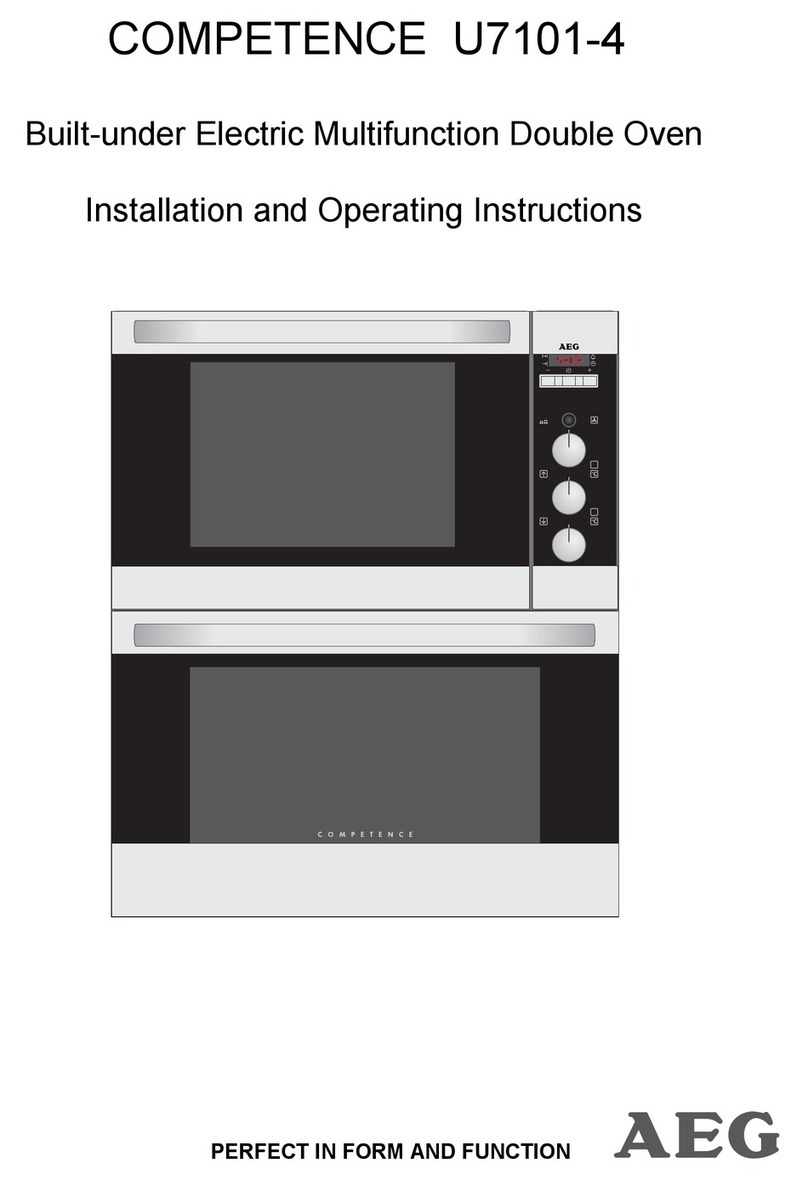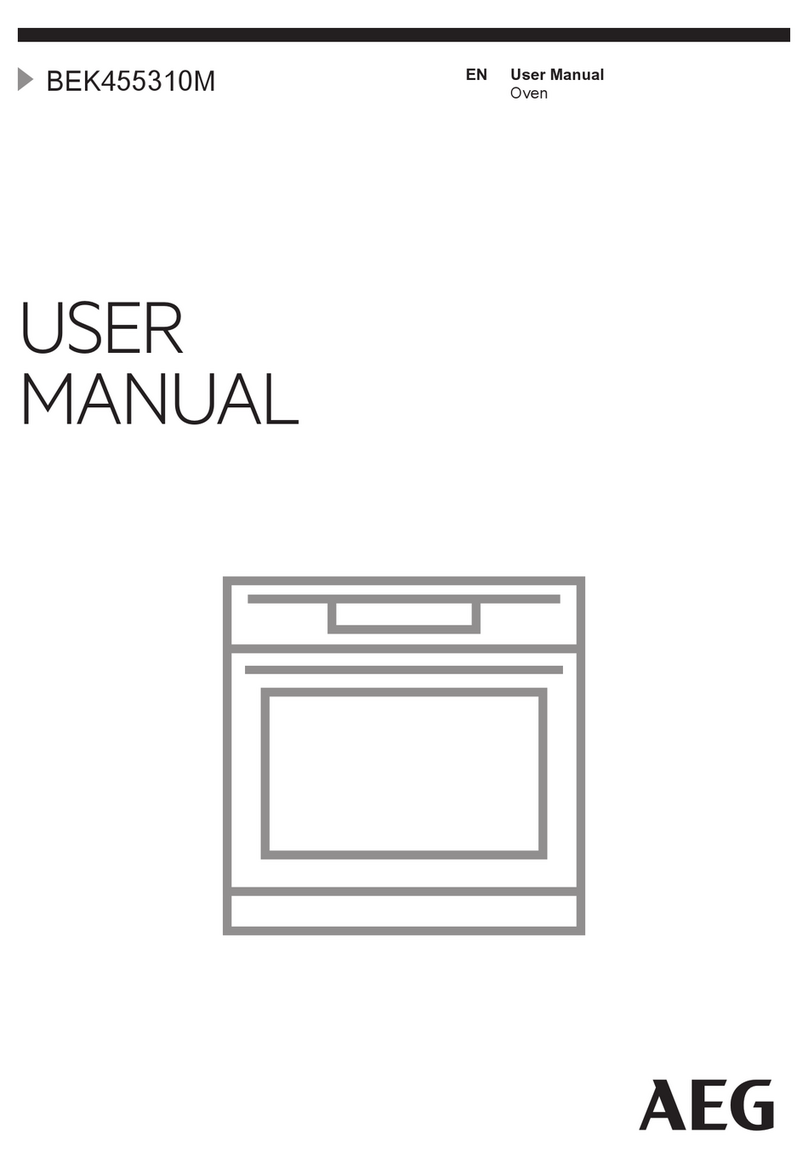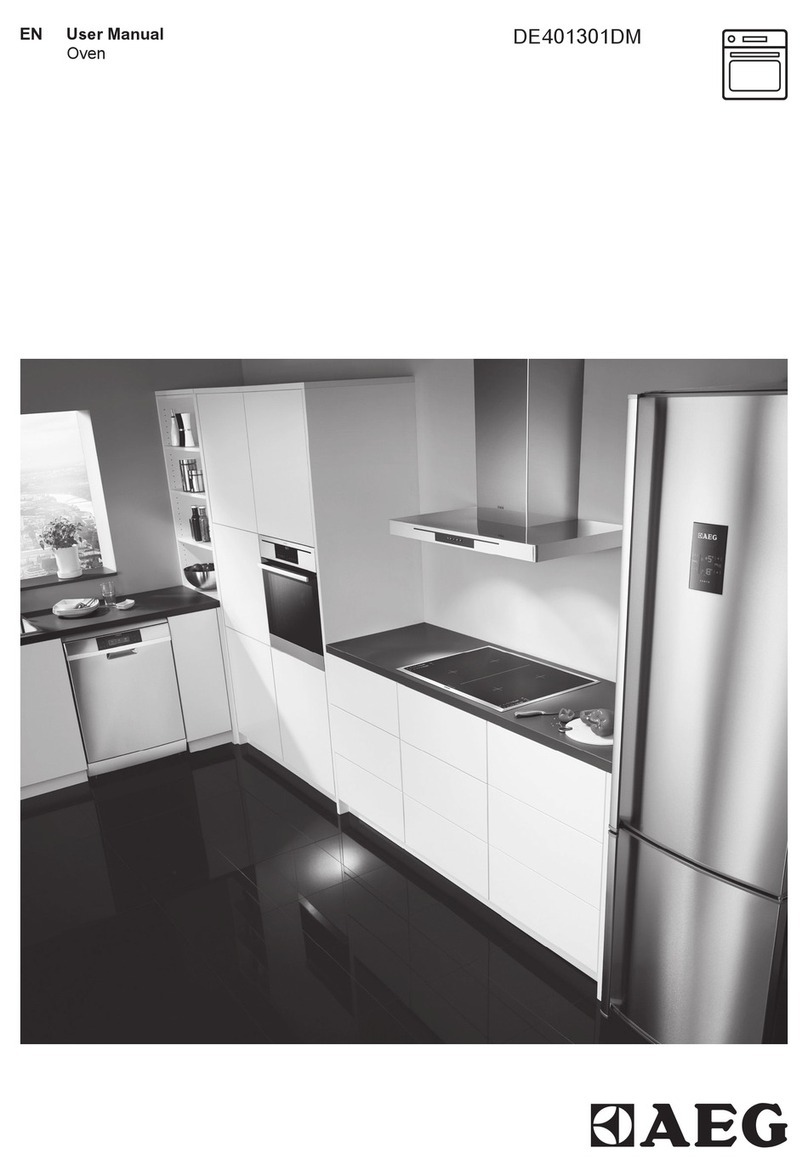
6
Defrost
The fan runs without heat to reduce the defrosting time of frozen foods. The time required to defrost the food
will depend on the room temperature, the quantity and type of food.
Conventional mode
Position of the thermostat knob “C”: between 50 and Max. On this setting, the top and bottom heating
elements come on. This is the classic, traditional type of oven which has been perfected, with exceptional heat
distribution and reduced energy consumption. The convection oven is still unequalled when it comes to
cooking dishes made up of several ingredients, e.g. cabbage with ribs, Spanish style cod, Ancona style
stockfish, tender veal strips with rice, etc. Excellent results are achieved when preparing veal or beef-based
dishes as well (braised meats, stew, goulash, wild game, ham etc.) which need to cook slowly and require
basting or the addition of liquid. It nonetheless remains the best system for baking cakes as well as fruit and
cooking using covered casserole dishes for oven baking. When cooking in convection mode, only use one
dripping pan or cooking rack at a time, otherwise the heat distribution will be uneven. Using the different rack
heights available, you can balance the amount of heat between the top and the bottom of the oven. Select from
among the various rack heights based on whether the dish needs more or less heat from the top.
Fan assisted mode
Position of the thermostat knob “C”. Between 50 and max. The heating elements, as well as the fan, will com
on. Since the heat remains constant and uniform throughout the oven, the air cooks and browns food uniformly
over its entire surface. With this mode, you can also cook various dishes at the same time, as long as their
respective cooking temperatures are the same. A maximum of 2 racks can be used at the same time, following
the instructions in the section entitled: “Cooking on More Than on Rack”. This fan assisted mode is particularly
recommended for dishes requiring a gratin finish or for those requiring considerably prolonged cooking times,
such as for example: lasagna, pasta bakes, roast chicken and potatoes, etc…
Moreover, the excellent heat distribution makes it possible to use lower temperatures when cooking roast. This
results in less loss of juices, meat which is tender and a decrease in the loss of weight for the roast. The fan
assisted mode is especially suited for cooking fish, which can be prepared with the addition of a limited amount
of condiments, thus maintaining their flavor and appearance.
Desserts: the fan assisted mode is also perfect for baking leavened cakes.
Moreover, this mode can also be used to thaw quickly white or red meat and bread by setting the temperature
to 80C. to thaw more delicate foods, set the thermostat to 60 or using only the cold air circulation feature by
setting the thermostat to 0.
“Top” oven
Position of the thermostat knob “C”: between 50 and Max. the top heating element comes on.
This mode can be used to brown food at the end of cooking.
Half Grill
Position of thermostat knob “C”: Max.
The top central heating element comes on.
The extremely high and direct temperature of the grill makes it possible to brown the surface of meats and
roasts while locking in the juices to keep them tender. The grill is also highly recommended for dishes that
require a high temperature on the surface: beef steaks, veal, rib steak, filets, hamburgers etc…
Some grilling examples are included in the “practical cooking advice” paragraph.
